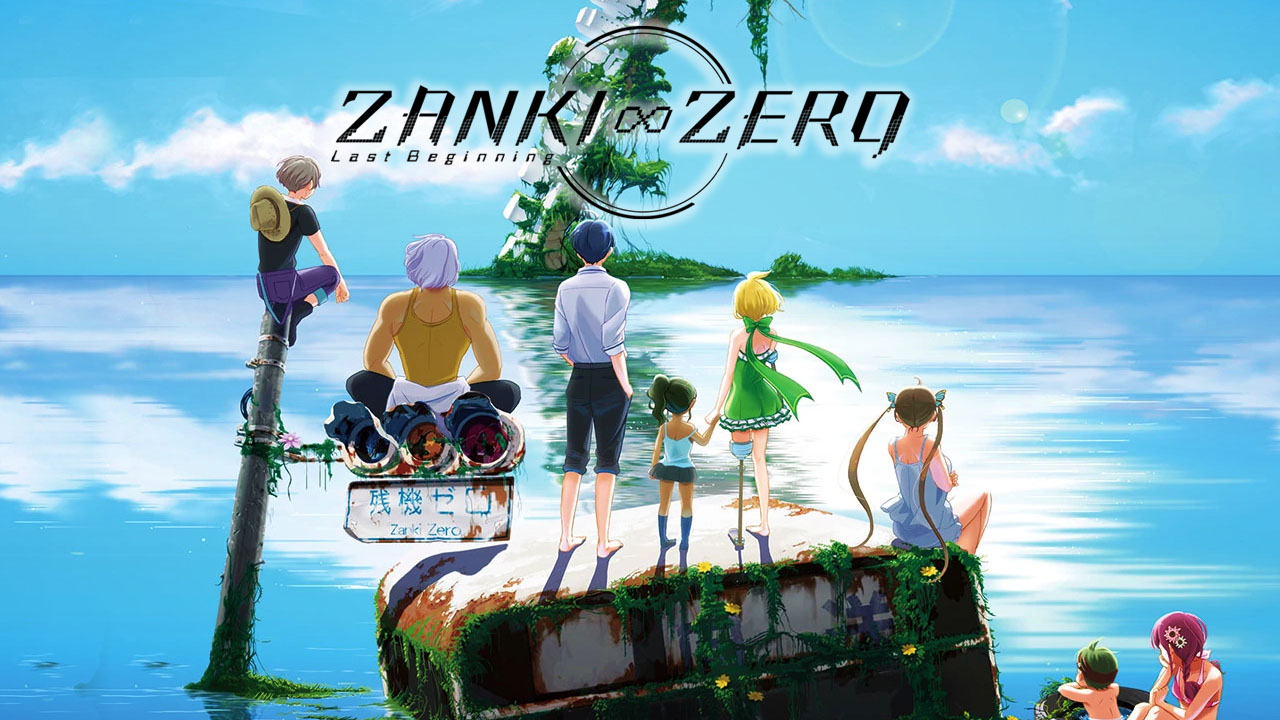
Publisher Spike Chunsoft is no stranger to dark, morbid and psychologically twisted games. Nor are they strangers to first person isometric dungeon exploration games. From Danganronpa to some Etrain Odyssy and Pokemon Mystery Dungeon games, they have become very well known for their interesting storytelling, dungeon designs, and exploration. Zanki Zero: Last Beginning is the most recent title for a producer and developer known for providing interesting stories and characters, usually revolving around death in more ways than one. How does this entirely new IP stand up? Read on to find out!
Zanki Zero: Last Beginning
Publisher: Spike Chunsoft
Developer: Lancarse
Platform: PlayStation 4 (Reviewed), PlayStation Vita, Windows PC
Release Date: April 9th, 2019 US/EU
Players: 1 Player
Price: $59.99
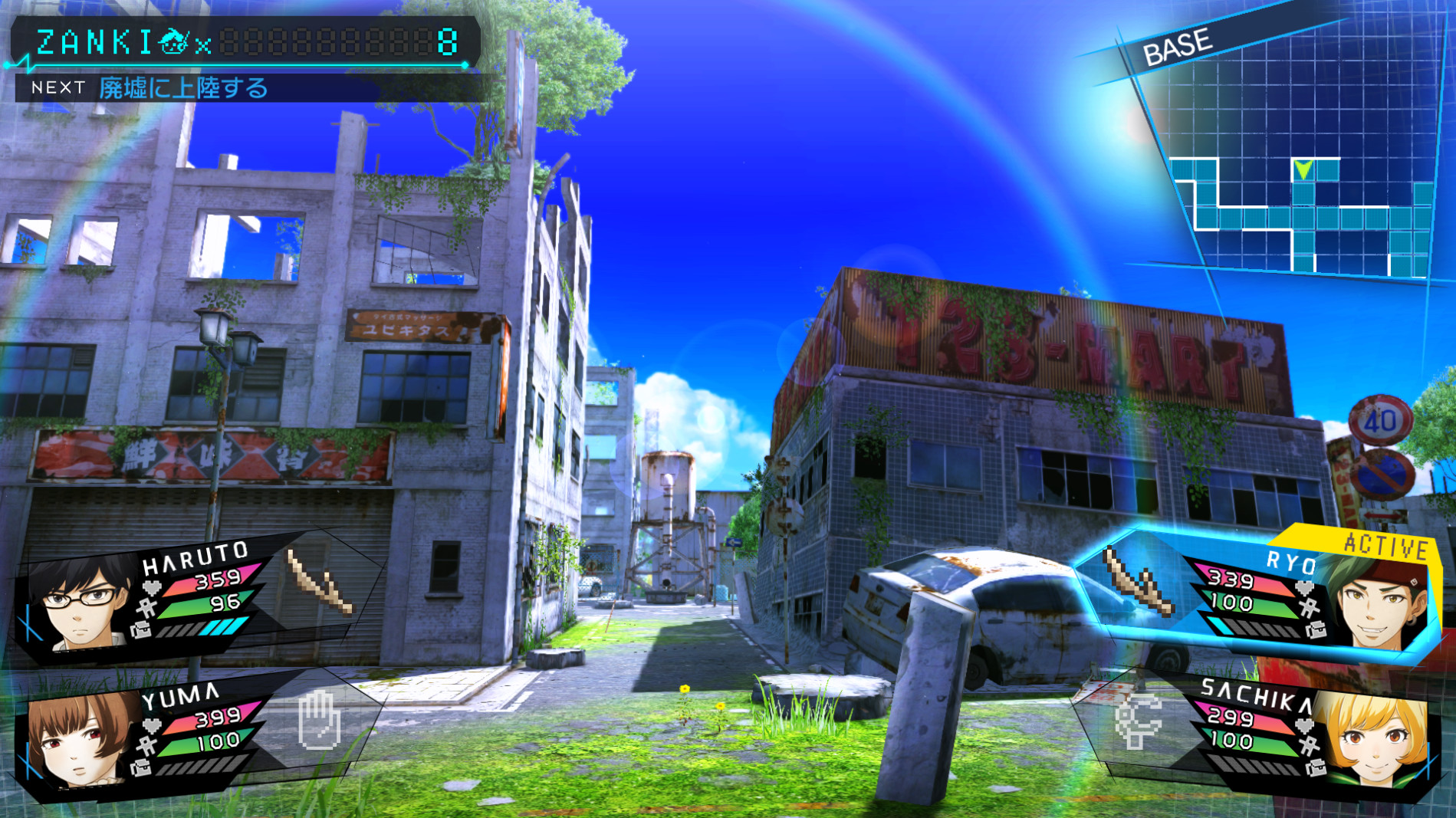
Zanki Zero is an odd little game. Part visual novel, part first person dungeon explorer, all weird. Players take on the role of one of 8 main protagonists, with the character changing in-between each chapter. The main story of the game plays out in a visual style novel type of telling, with the story coming through interactions between the characters and their two TV guides, Sho and Mirai.
I say visual novel, but it is more akin to how the story is shown in games like Danganronpa and Phoenix Wright. During each chapter, the player will be presented with different story elements, including backstory on the character they are currently controlling.
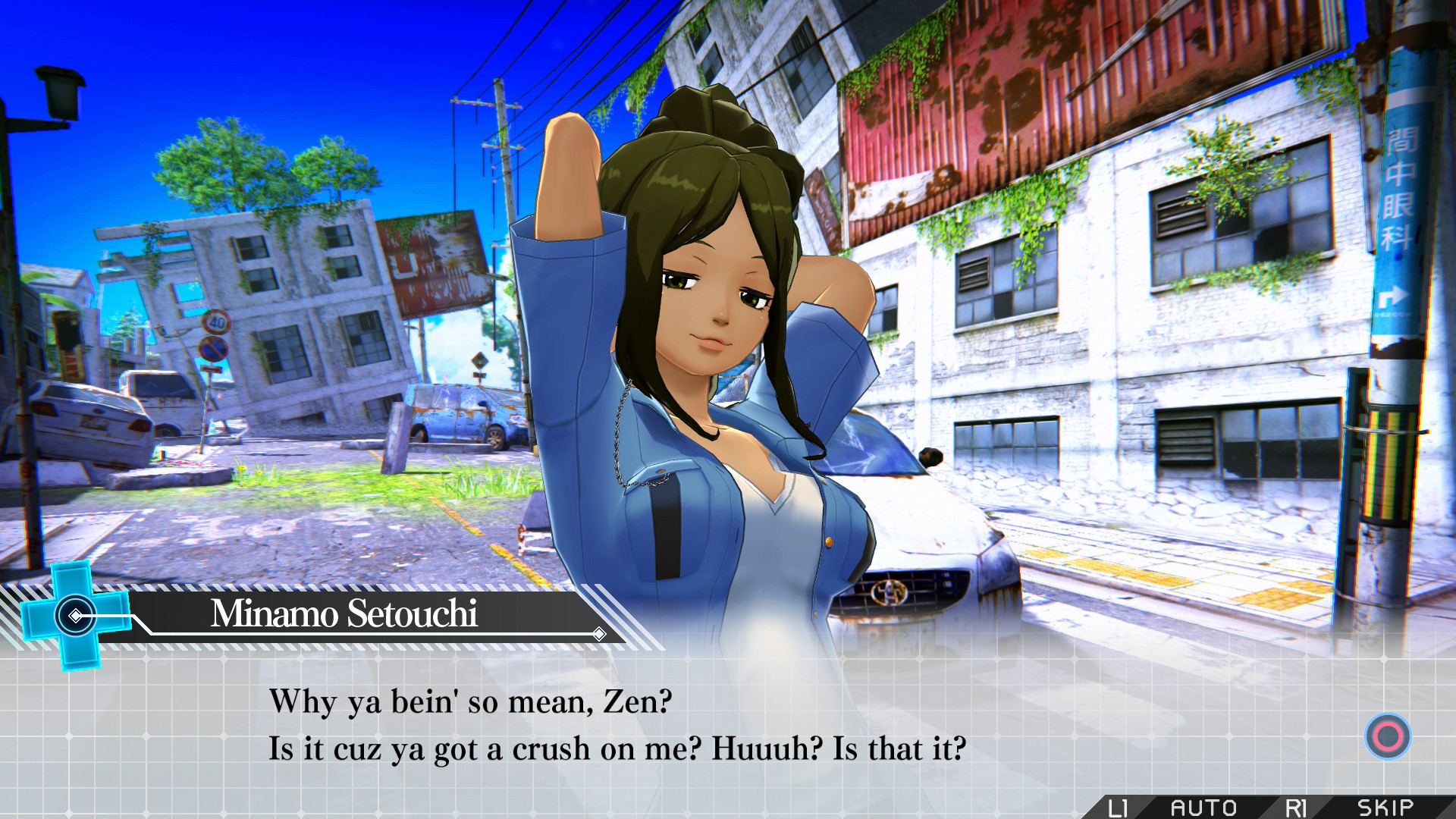
Honestly, the story in Zanki Zero is by far the most interesting aspect of the entire game and the part that is best fleshed out. It is very much a horror mystery game, and there are times where this game is very graphic and stomach churning.
Each chapter of the game will have the player delving more into exactly what happened to the world, why the eight protagonists are there and the roles they will each play, usually under the guise of “Illuminating a brighter future for humanity!”
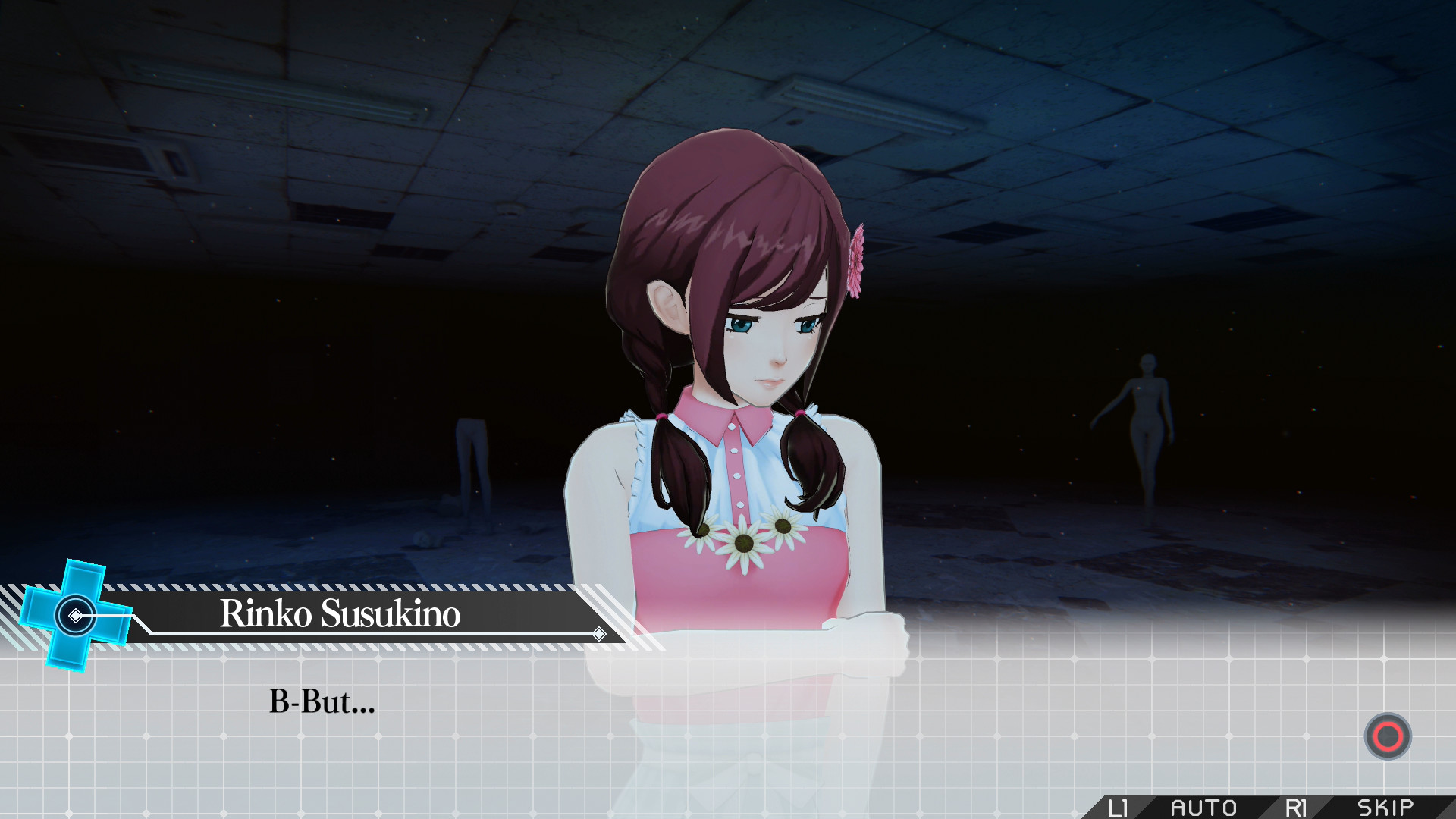
None of the characters are innocent, each hiding a dark side of themselves and their past. They are broken and generally miserable people, and their imperfections are what drove me. I’m willing to bet they will drive other players, to see how they all got together and how they will resolve the world ending.
It’s very hard to really describe a lot of the story without giving away spoilers, even in the first part of the game, as the mystery of the world and the characters begins early on. But death, life, and rebirth play a major role in everything the player does.
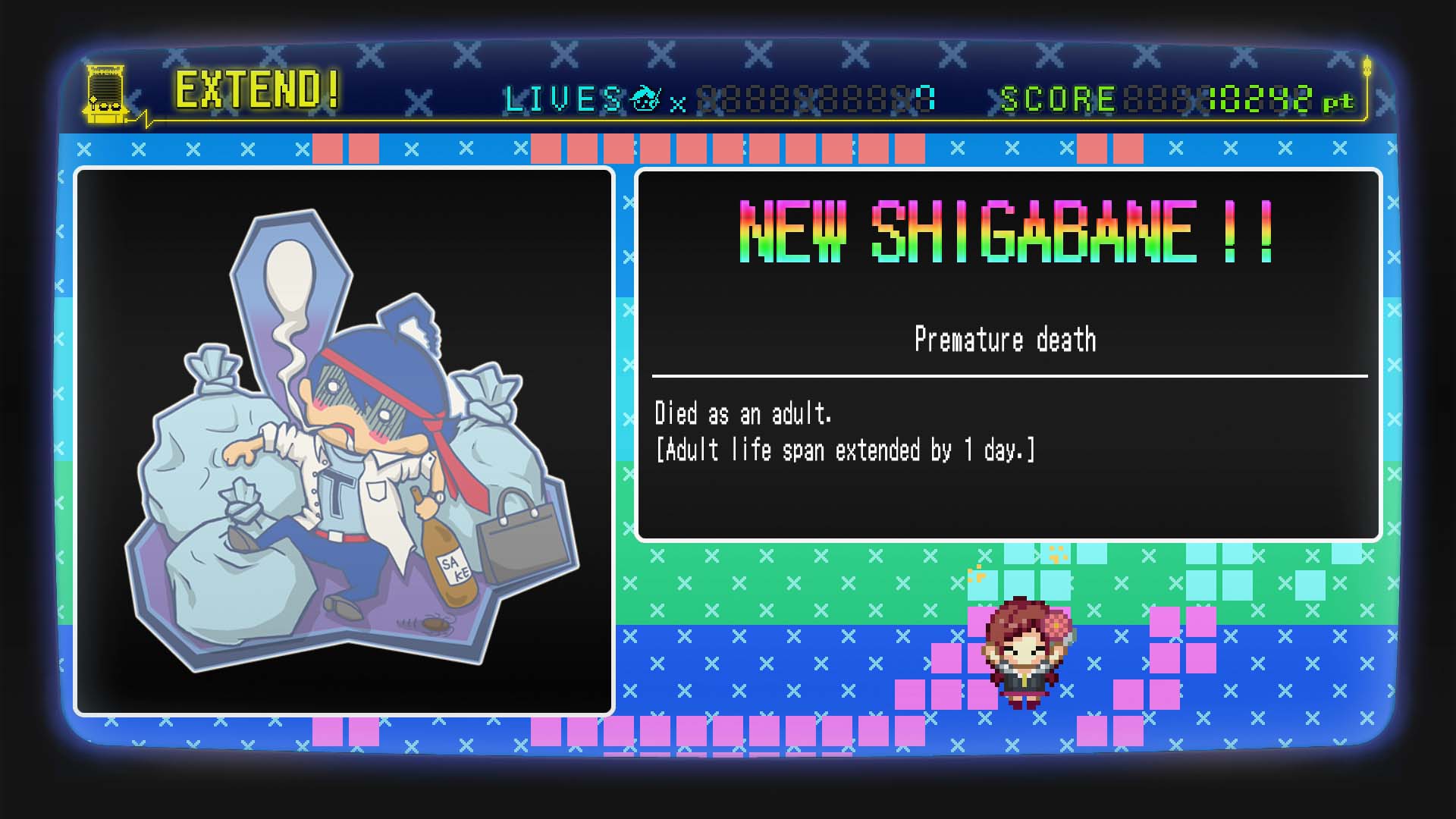
As much as I’m loathe to even make the comparison, death is used in a way in Zanki like it is in say, Dark Souls, or Planescape: Torment. You will not be able to complete the game without dying, being reborn and dying again. Actually, players will be forced to kill their own party members in order to continue the story, progressing the mystery even further.
In order to progress the story and see how everything unfurls, players will explore and interact with the world via a first person style dungeon crawler, similar in style to old computer RPGs or the Etrain Odyssey series. Luckily, in Zanki, players will not be forced to create their own maps as they explore the main island and each of the dungeons that appear in each of the chapters.
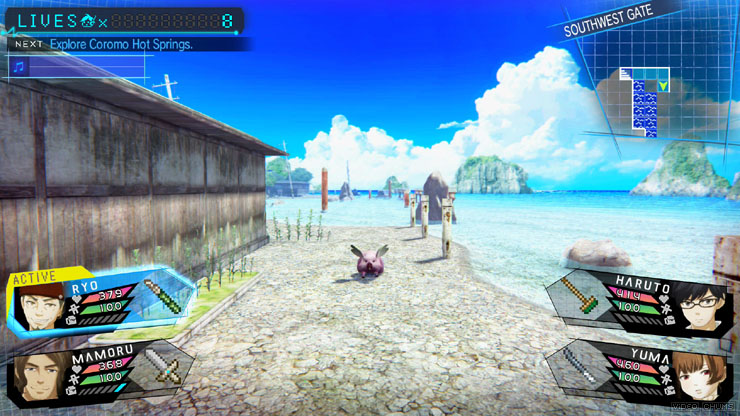
You will only be able to move in the cardinal directions, but you can at least move side to side while exploring without turning the camera, which will greatly help during combat – which is probably the worst experience in this game.
Each character has a weight limit dependent on the age of the character. Not only does the equipment each character has equipped affect this, but also what they are carrying as far as inventory goes. One of the main components of the gameplay in Zanki is not just exploration, but survival.
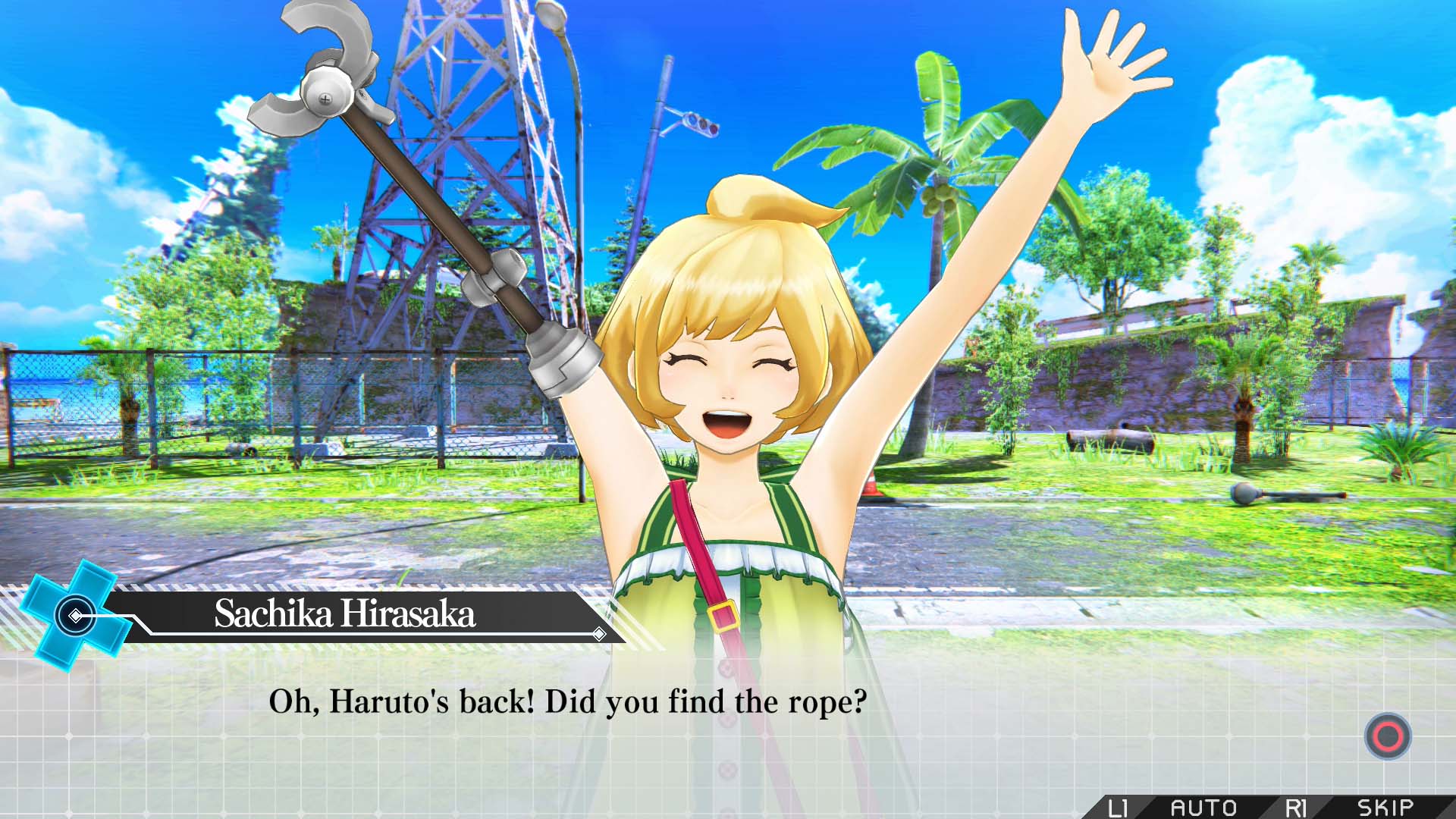
In order to survive in the apocalyptic future, the player will need to gather different supplies from around the island and the dungeons, ranging from rock salt, to expended bullet casings, to vines and a wide assortment of other items. These items in turn will be used to expand the original island as well as improving and creating new arms and armor for the characters.
But like I said, literally everything you pick up or equip will affect your weight limit. Beyond that, you only have a few weeks in game before each rebirth, if you’re not killed before the end of that limit that is. Since you will need these items, it makes item management a necessity, but even that is a bit of a slog, as you can only move one item at a time.
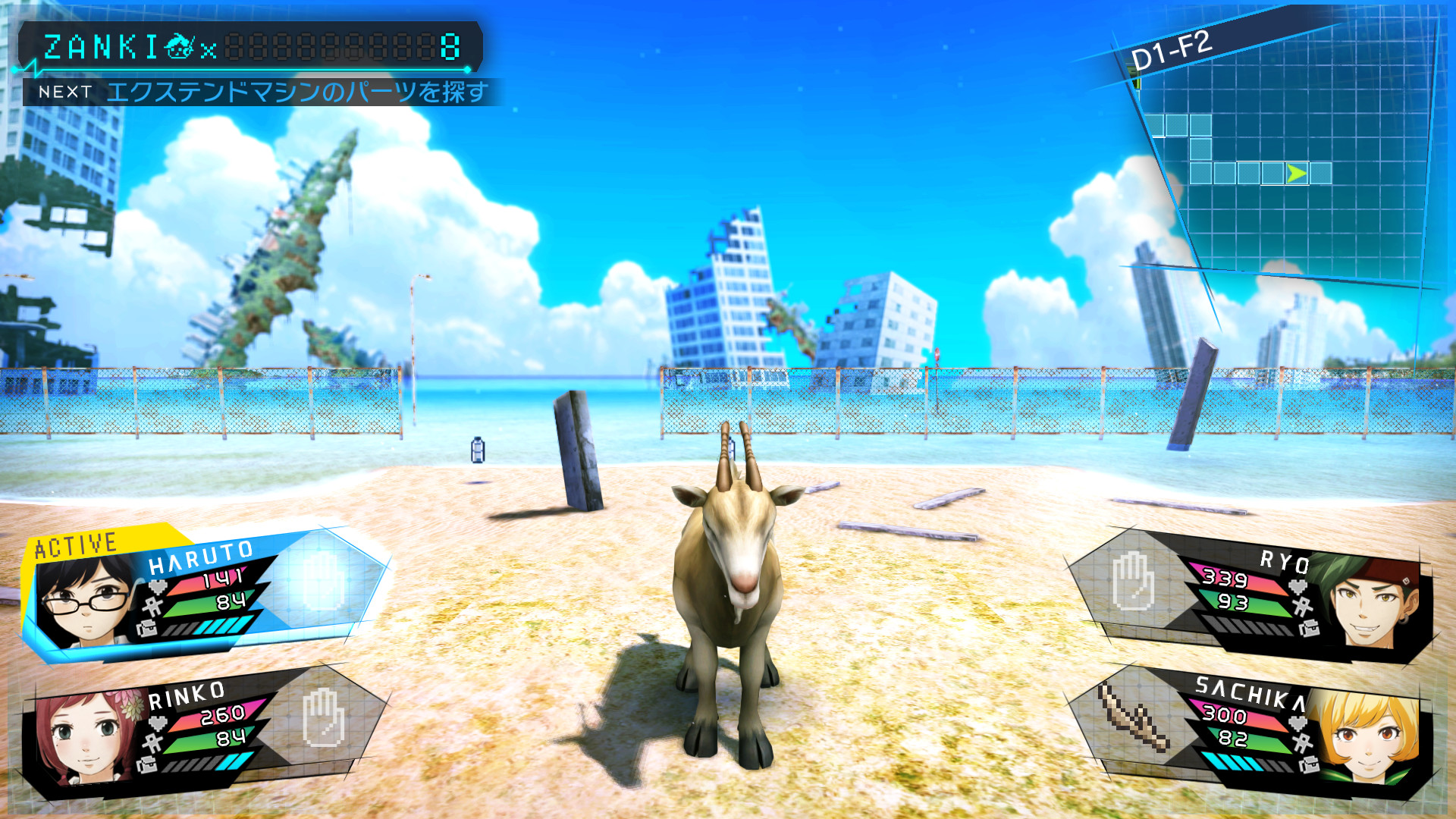
You will eventually develop ways to increase item load and to store items, but that will require skill points. Each character will get skill points as they increase in levels and these skill points will equate to new passive, out of combat skills, like the ability to develop new structures on the main island, and developing new survival skills.
Since the game is touted also as a survival game, it should come as no surprise that there are a few survival mechanics you will have to be on the look out for. Namely, this is one of the few RPGs I’ve played where mandatory “bathroom breaks” are part and parcel of the game.
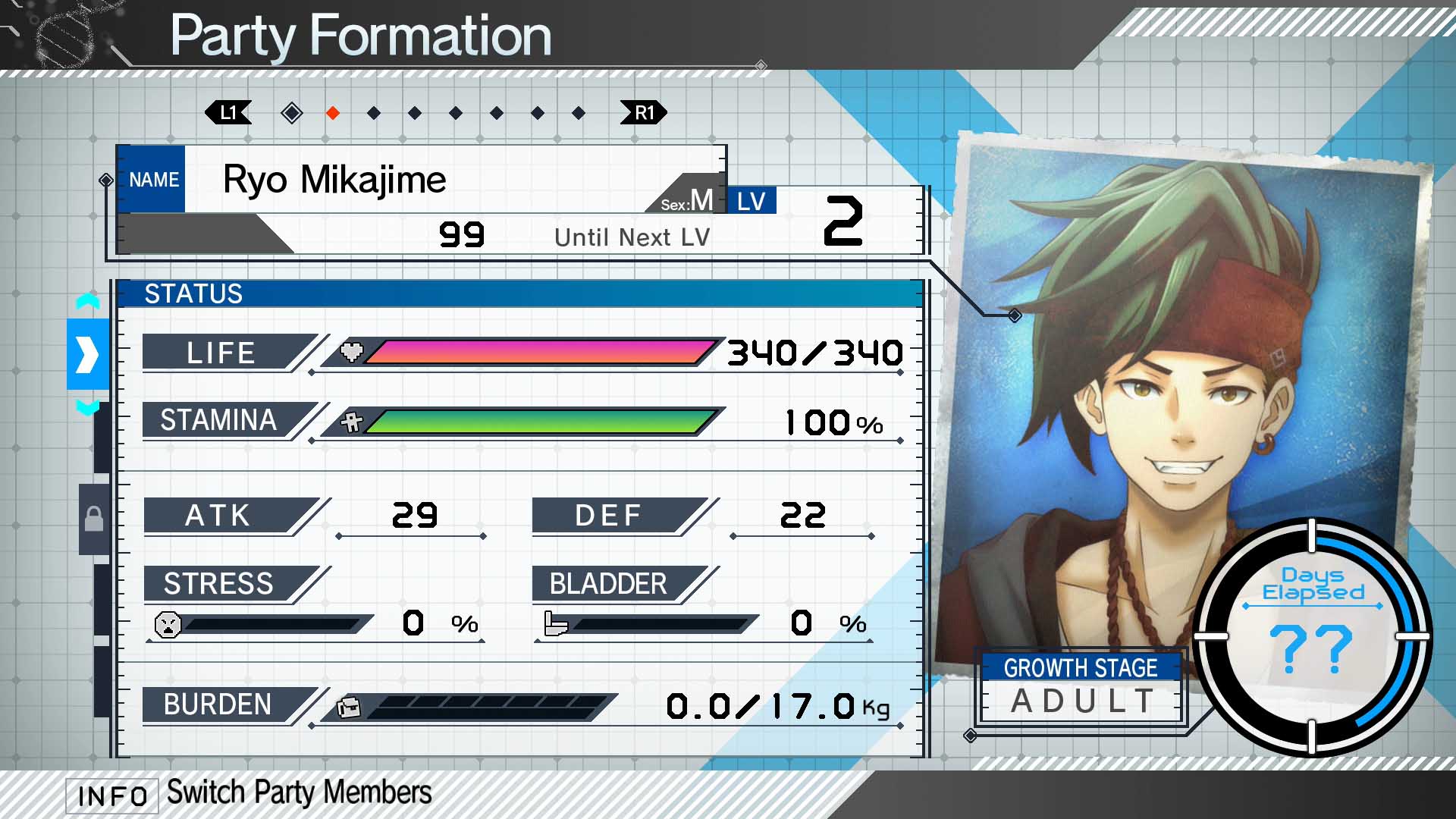
You will be able to cook and eat various foods throughout the game, and in doing so, your characters will eventually have to relieve themselves. Go too long without a break, and penalties begin to accrue, up to and including death.
Yup, you can die by not letting your characters go to the restroom. Exactly how this happens and what the effects of doing so are, I’ll let our readers find out for themselves. But it’s not something you really want to miss.
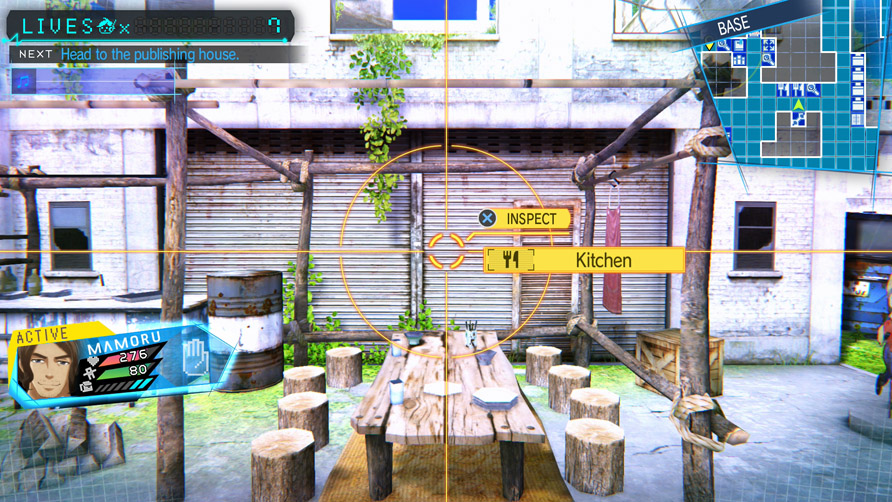
Beyond having to go to the bathroom and building and upgrading your own porcelain god throne, you will also have to deal with stress levels and hunger. Each of these will have positive and negative effects on your character. Worry not however, as there are several different ways to manage them.
However, when playing on normal or hard, you will most definitely have to worry about these, as well as the aforementioned bathroom breaks, in order to progress on without some serious headaches. Of course, you could just turn on easy mode and not worry about a lot of the survival aspects.
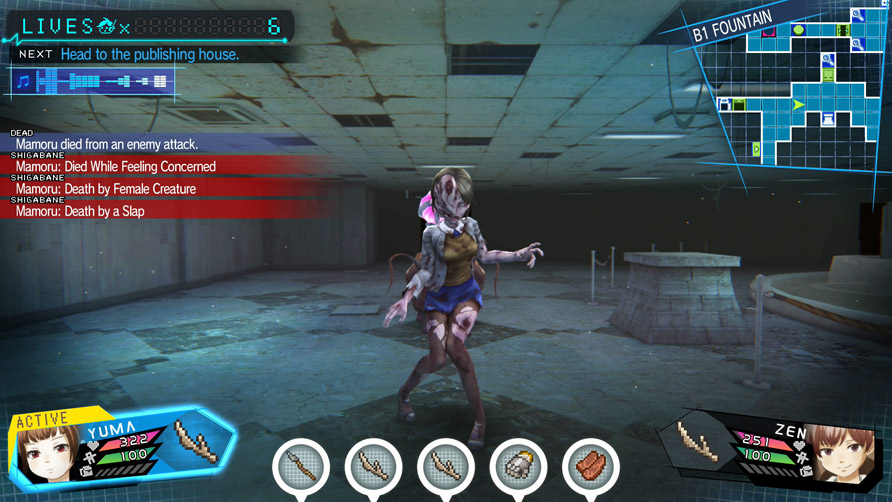
Easy mode will lower the number of enemies you face to almost nill, remove the need to worry about most of the survival aspects of the game, lower EXP received, as well as items received from combat. Journalist mode, however, does allow the player to focus on the best aspect of Zanki, the story, without the parts that need improvement.
Combat is one of the worst aspects of this game, unfortunately. As good as the story and the exploration are, combat is just bad. Each enemy is depicted on screen and there is no transition to a combat mode. This means that the fairly limited mobility will also be limiting you in combat as well.
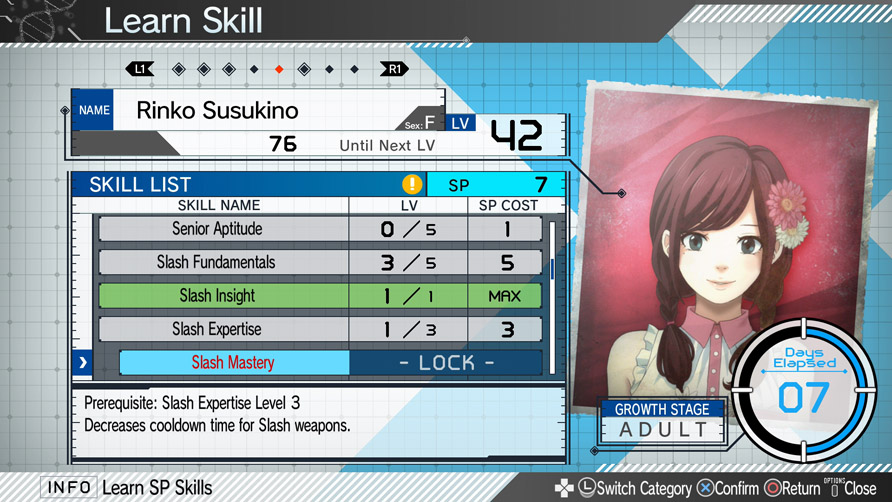
Leveling up and applying the various skill bonuses, especially to the combat skills, is an absolute must in order to progress on. Unfortunately, you will also need to use those skill points to increase non combat related skills, such as reformer and survival, which allow you access to even more new skills for survival, and upgrading garage island.
There are ways to reallocate those skill points as you progress further in the story, so there really is no worry about putting points into useless skills or making your characters so weak they won’t be able to complete the game.
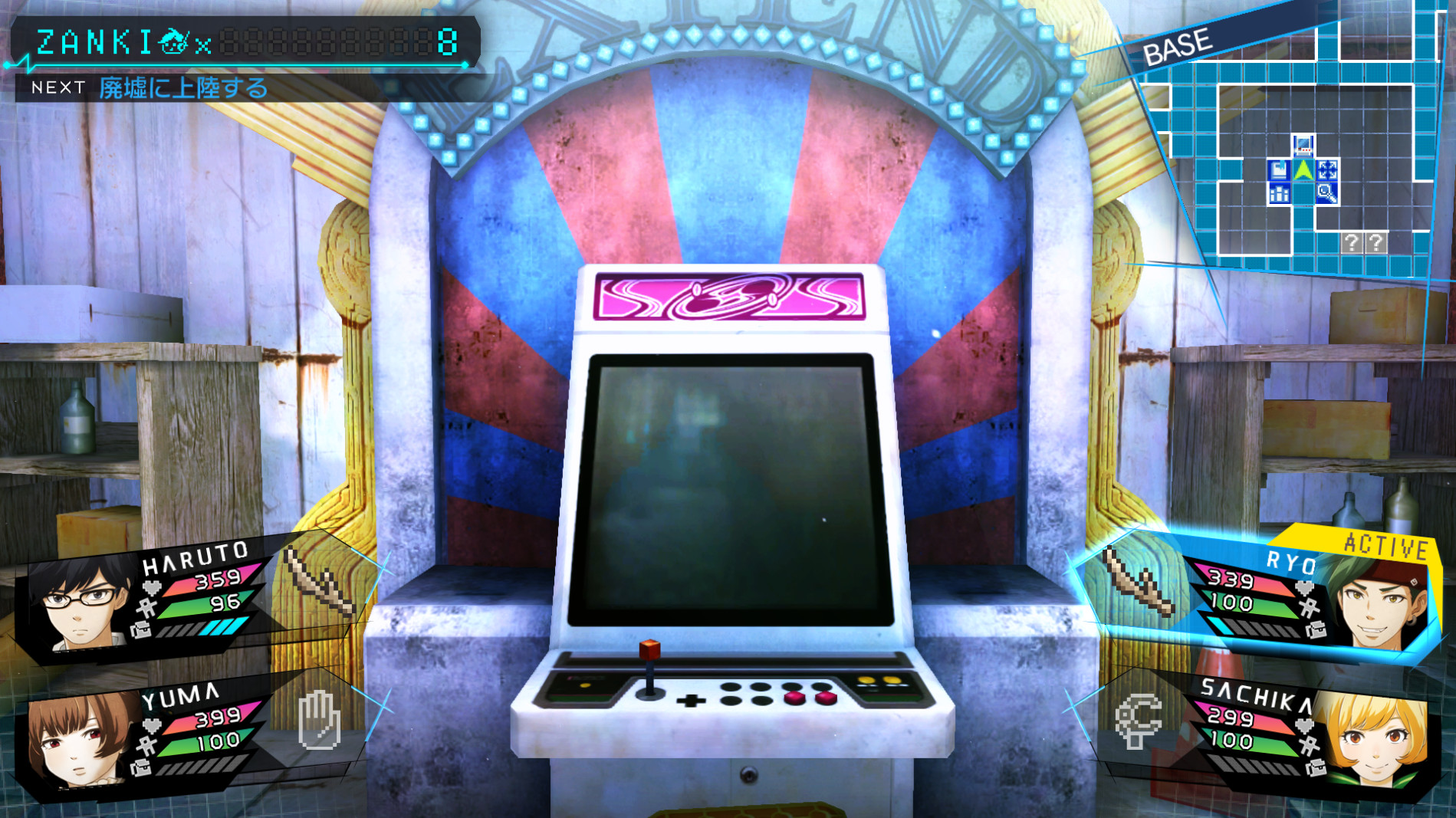
Graphically, the game is fairly well done, especially when it comes to the character portraits, which are all very highly detailed anime affair. Not only that, but there are several different appearances and full body renders of each of the characters depending on their status or time progression. The rest of the game is a little less pretty, with lots of old school nods to the 8bit era of gaming.
The items you pick up throughout your adventure will all be reminiscent of the old item icons of a bygone era. The stages themselves, including garage island and the various dungeons, are all first person affairs that are reasonably well designed, but lack the overall detail that the characters and cutscenes themselves all share.
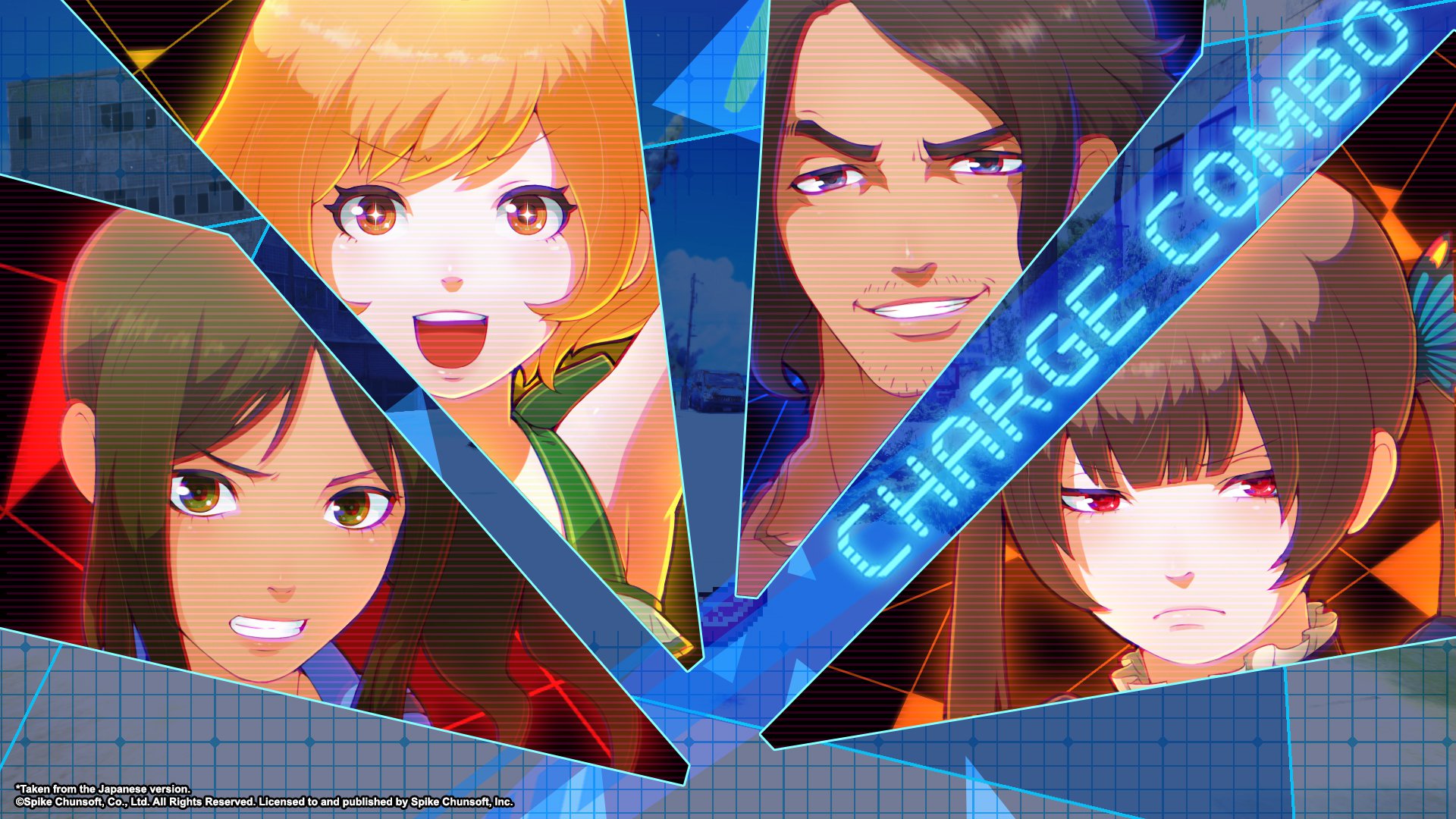
Really, I enjoyed the character designs and cutscenes more than anything else in the game beyond the story itself. The cutscenes for the backgrounds of the characters have an unique aesthetic for them which really sets them apart from the rest of the game.
The cutscenes are all very well done and evoke a lot more emotion than the stages themselves. I should mention, when I say cutscenes, I really mean more “cutpictures”, as the game tells the story in a very visual novel type approach, as I mentioned earlier.
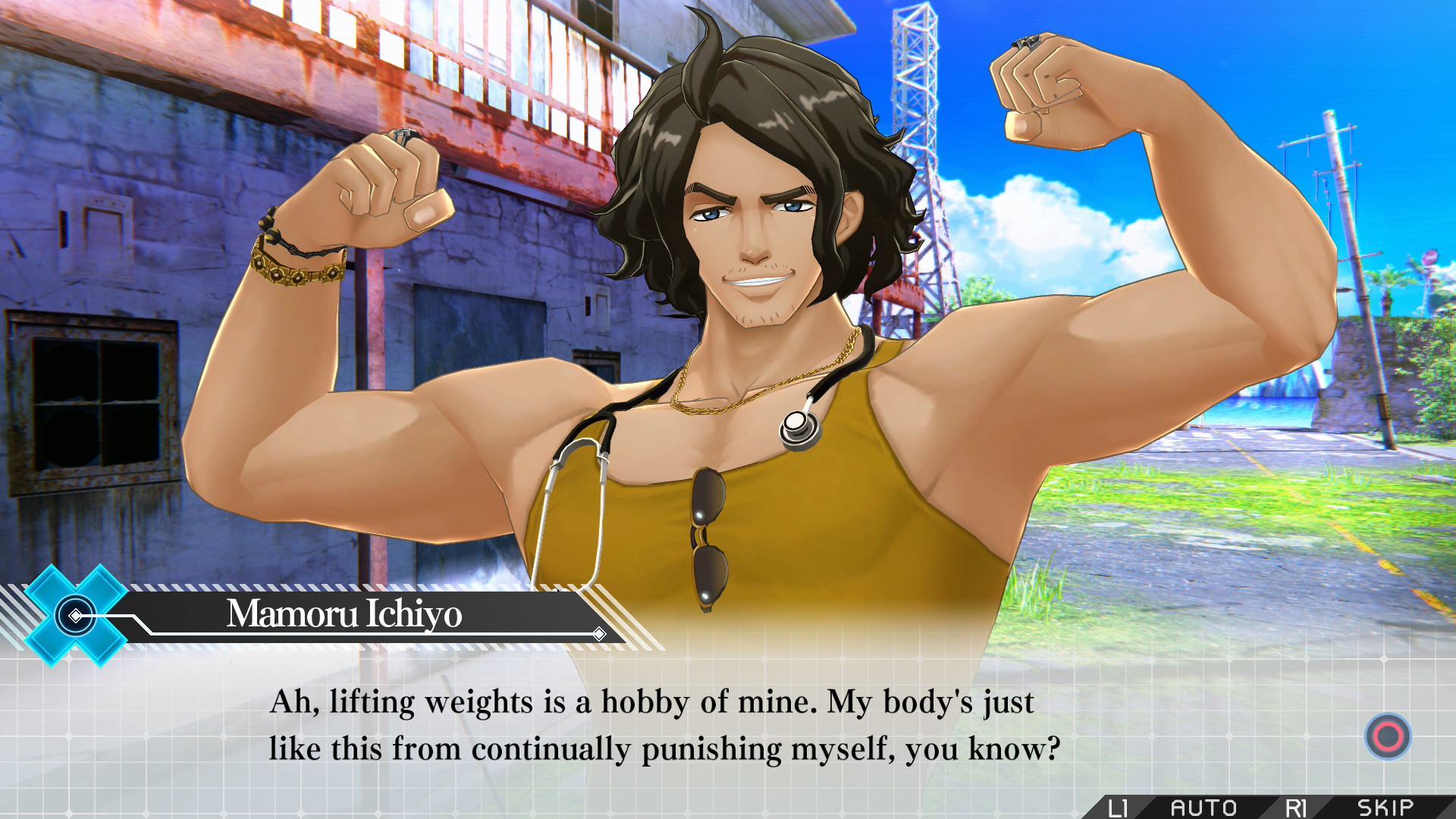
Since I know it is important to our readers, Zanki Zero received some censorship when it came west. Spike Chunsoft was very open with this, it boils down to: a character had several panty shots removed or altered, a scene where a child was nude and her arms/angle of the shot were changed, and all child bedtime events were removed.
If you weren’t aware of these changes before purchasing the game, I’m not sure you would even know they had been removed. I leave it up to our readers if they wish to purchase the game or not based on this. As has become the norm however, there is always the import option, and our friends at Playasia have the Japanese version available with English subtitles.
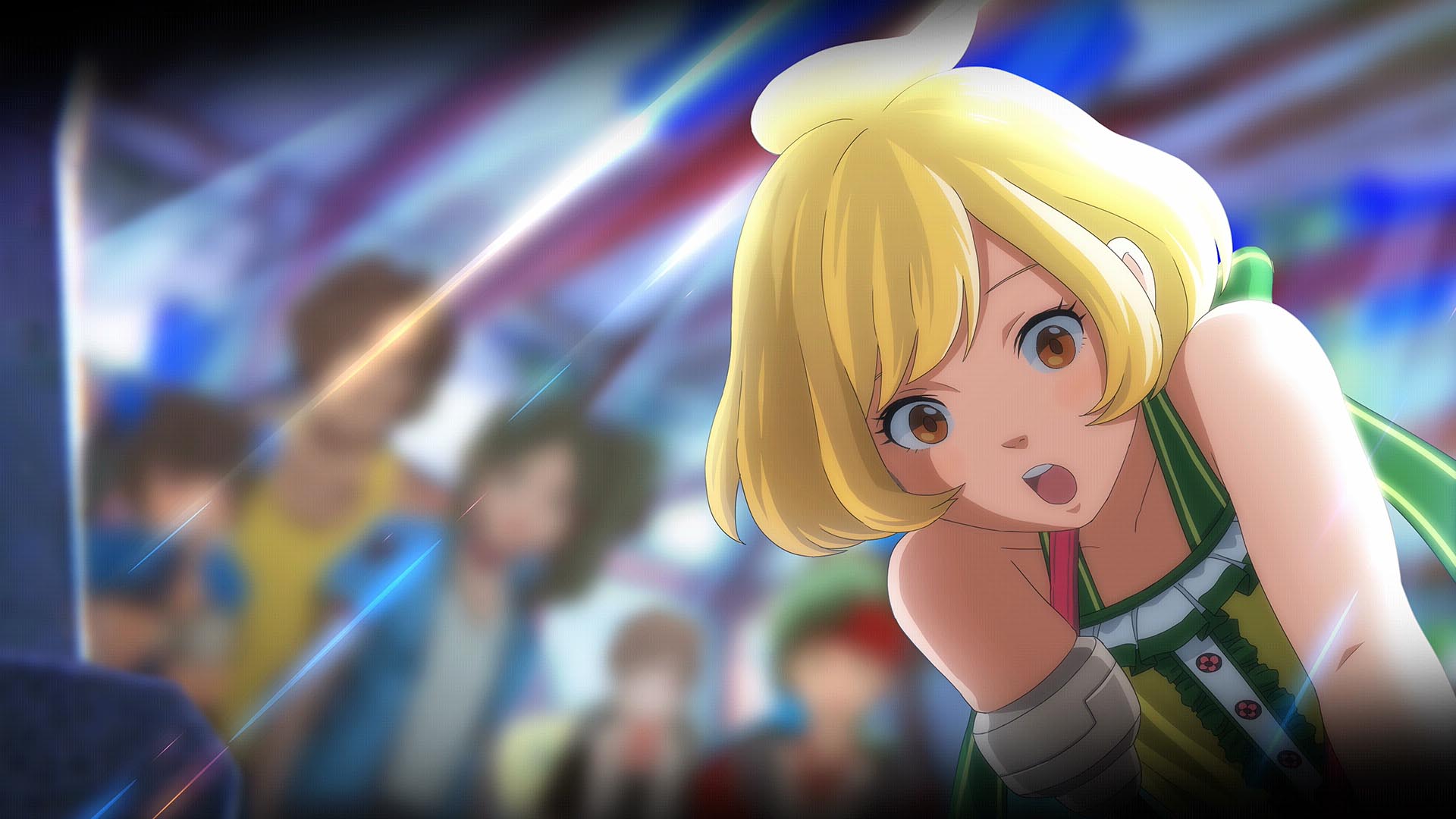
Zanki Zero: Last Beginning is a charming and unique game that tries out several different mechanics with various levels of success. As I said, I didn’t really enjoy the combat in the game, as you’re limited to just one attack button in a very limited combat situation.
However beyond that, the crafting, upgrading, survival and most importantly, the story, are all very well done and generally enjoyable. If you’re a fan of very dark and “mind screwy” type of stories, then you’ll definitely find something to enjoy with Zanki Zero: Last Beginning.
Zanki Zero: Last Beginning was reviewed on PlayStation 4 Pro using a review code provided by the producer to Niche Gamer for review purposes. You can find additional information about Niche Gamer’s review/ethics policy here.